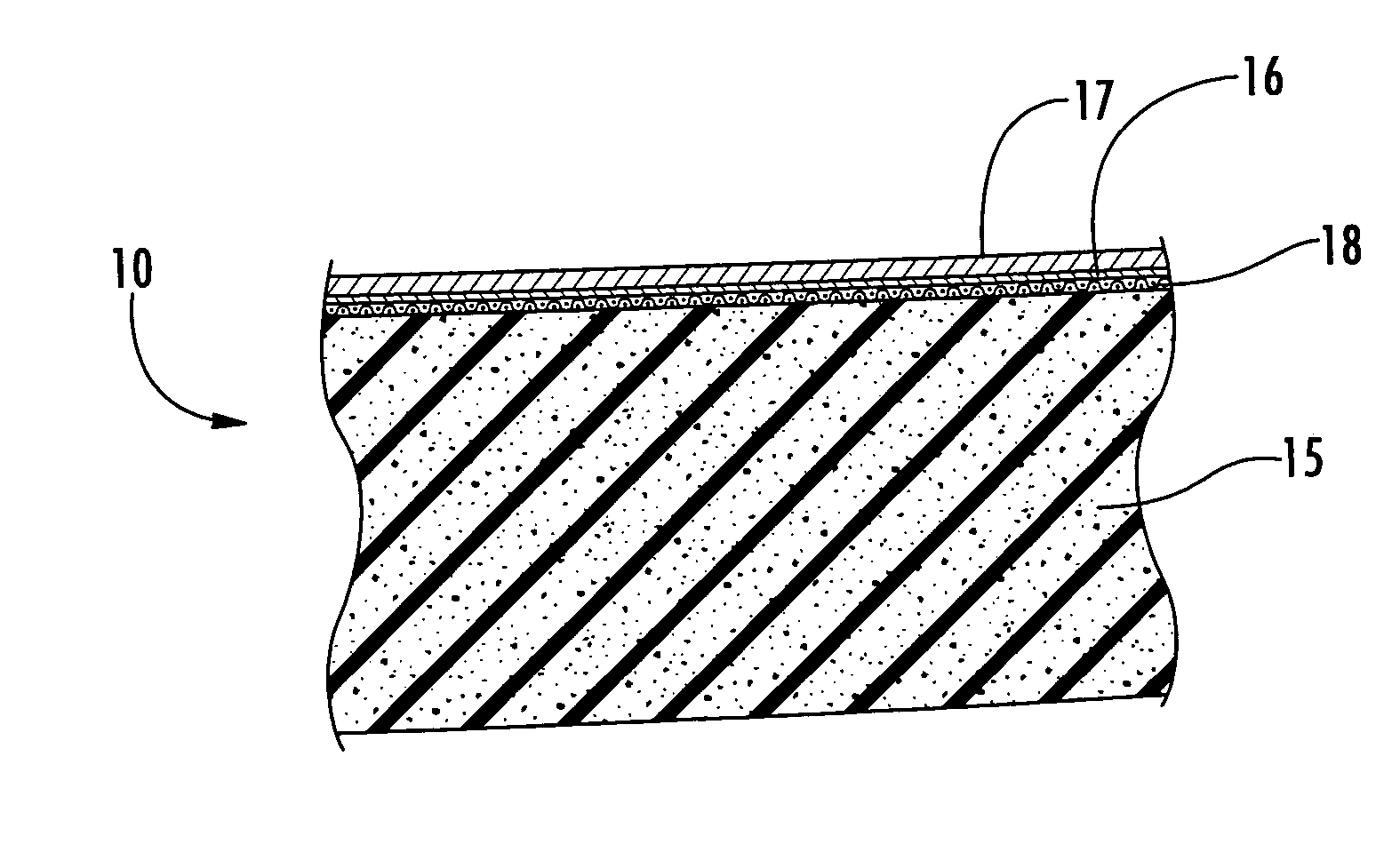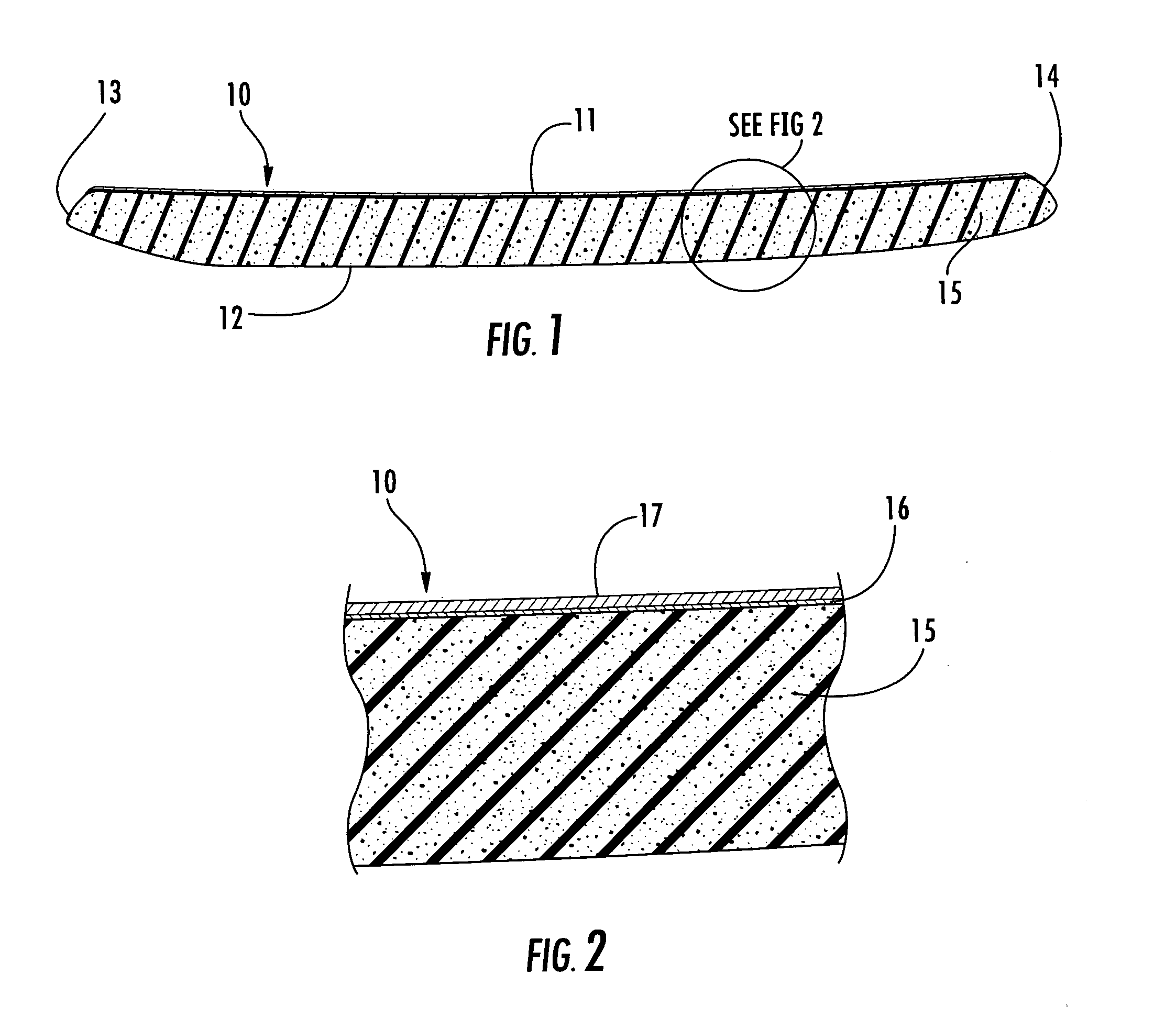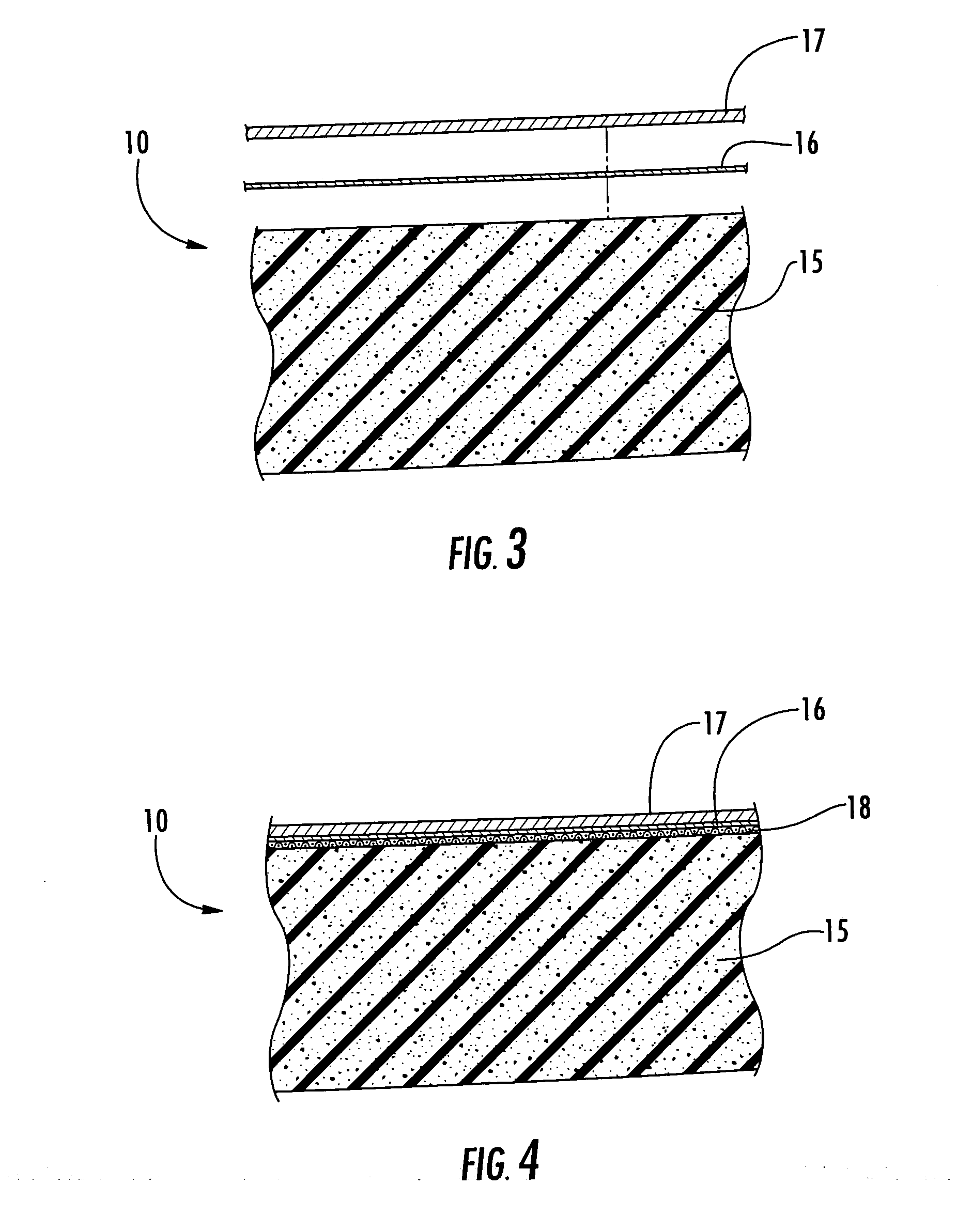Polyolefin foam composite material
a polyolefin foam and composite material technology, applied in special-purpose vessels, weaving, other domestic objects, etc., can solve the problems of affecting the aesthetics of printing, preventing delamination, and unable to apply graphic images to foam, so as to achieve enhanced aesthetics of printing or graphics, and process simple and efficient
- Summary
- Abstract
- Description
- Claims
- Application Information
AI Technical Summary
Benefits of technology
Problems solved by technology
Method used
Image
Examples
Embodiment Construction
[0017] The present inventions now will be described more fully hereinafter with reference to the accompanying drawings, in which some, but not all embodiments of the inventions are shown. Indeed, these inventions may be embodied in many different forms and should not be construed as limited to the embodiments set forth herein; rather, these embodiments are provided so that this disclosure will satisfy applicable legal requirements. Like numbers refer to like elements throughout.
[0018] Referring to FIGS. 1 and 2, reference character 10 generally indicates a composite material in accordance with the present invention that has been fabricated into the form of a bodyboard having a top 11, a bottom 12, a front 13 and a rear 14. The composite material 10 includes a foam base layer or core 15 formed of a semi-rigid expanded foam polymer material. The foam base layer may typically have a thickness in the range of from about one inch to about 4 inches and is preferably formed from a closed ...
PUM
| Property | Measurement | Unit |
|---|---|---|
| density | aaaaa | aaaaa |
| thickness | aaaaa | aaaaa |
| thickness | aaaaa | aaaaa |
Abstract
Description
Claims
Application Information
 Login to View More
Login to View More - R&D
- Intellectual Property
- Life Sciences
- Materials
- Tech Scout
- Unparalleled Data Quality
- Higher Quality Content
- 60% Fewer Hallucinations
Browse by: Latest US Patents, China's latest patents, Technical Efficacy Thesaurus, Application Domain, Technology Topic, Popular Technical Reports.
© 2025 PatSnap. All rights reserved.Legal|Privacy policy|Modern Slavery Act Transparency Statement|Sitemap|About US| Contact US: help@patsnap.com



